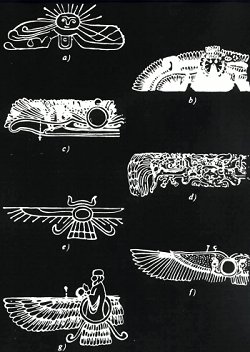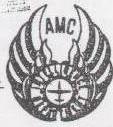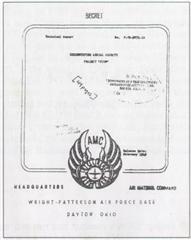Doctor Who 2008
Christmas Special
I'm a bit of a Doctor
Who fan, as are my wife and two boys. I also enjoy the spin-off
series 'Torchwood'. Both series have roots in Cardiff, Wales, so it was a
great surprise to hear that some of the filming would take place in Gloucester,
my hometown in England. Gloucester is no stranger to movie makers.
The interiors of the Cathedral Cloisters provided a backdrop for many of the
Harry Potter movies.
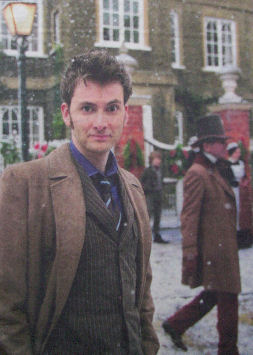
Acting on some inside
information, my wife, Mrs Darkstar, took the camera and the kids and went in
search of the filmset. She was not to be disappointed, quickly discovering
a hive of activity in Millers Green, a beautiful cul-de-sac of traditional
buildings set within the grounds of Gloucester Cathedral. She was one of
the first 'locals' on site, and took a selection of photos and videos as the
wintry film set was created in situ.
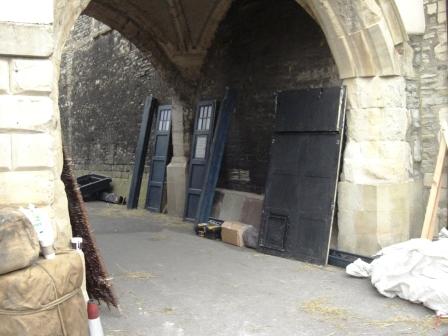
These photos show the
TARDIS from flat-pack, to completely ready for filming.
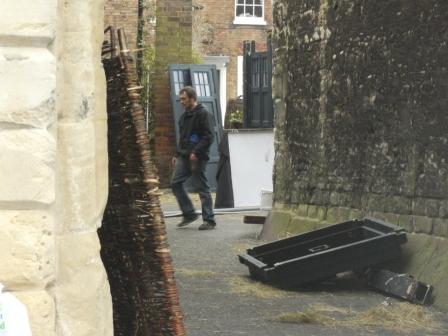
Millers Green is a
secluded spot, so it was not possible to see what was going on from the security
barriers erected at the entrance to the cul-de-sac.
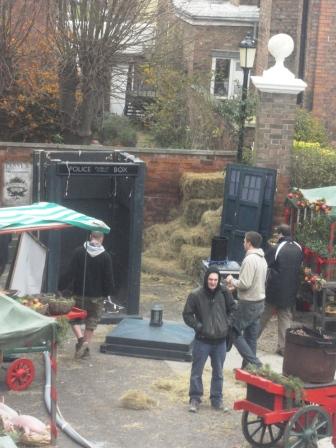
Ever resourceful, Mrs Darkstar worked her way
through the interior of the cathedral, and eventually discovered a vantage point
which provided a clear view of the proceedings.
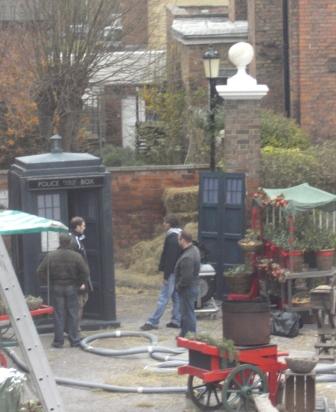
The filming itself took
place during the night, from 8pm to 5am. It was not possible to get images
of the actual filming, unfortunately.
The local newspaper, 'The Citizen',
provided the following information about the filming:
"Gloucester is set to be
invaded by the Cybermen next week as Dr Who lands his famous Tardis in the city.
Filming for the popular sci-fi drama will take place at various city landmarks
including the Cathedral. It is believed that the Doctor, played by David
Tennant, will be joined in the special Christmas episode by his current
companion Donna (Catherine Tate) and his former sidekick Rose (Billie
Piper).
The storyline, featuring Cybermen
- the Doctor's deadliest enemies - is being kept under wraps but the city's
historic buildings will be transformed for the special
episode.
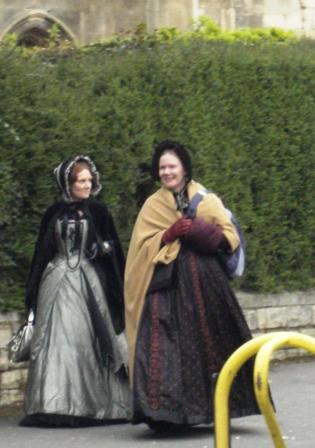
"Millers Green will be taken
back in time to the Victorian days and appear as a market scene while the BBC
drama team will cover the front car park of the Cathedral in snow to evoke
winter."
The Dr Who 2008 Christmas
Special is set during the Victorian era, and clearly has a snowy feel to
it. We don't get a lot of snow in Gloucester, so it's especially bizarre
to see half the historic buildings of the town covered with it...artificial
snow, of course! As you can see here, the kids of Gloucester loved
it:
There was a palpable sense of excitement in the city that extended
beyond the kids. After all, even the grown-ups grew up with Doctor Who,
and the Cybermen and Daleks are now part of the fictional folklore of this
country.
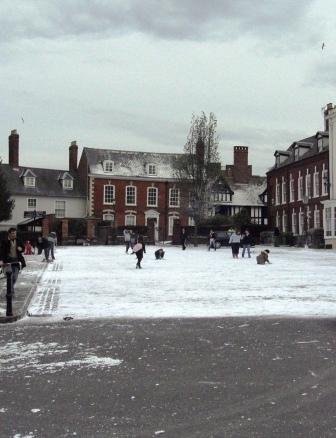 Russell T Davies, the genius behind the revived Doctor Who
phenomenon, was impressed by the turnout of Who fans in the city:
"When we filmed in
Gloucester in April, for the Christmas special, the people were marvellous.
It was the biggest turnout of fans we've ever had - there were hundreds of
people. It was like crowd control in the end. We had a
magnificent time in Gloucester, as it doubled for 1851 London. It looks
beautiful on screen and Gloucester will be looking romantic covered in snow
on BBC One on Christmas Day."
Russell T Davies, the genius behind the revived Doctor Who
phenomenon, was impressed by the turnout of Who fans in the city:
"When we filmed in
Gloucester in April, for the Christmas special, the people were marvellous.
It was the biggest turnout of fans we've ever had - there were hundreds of
people. It was like crowd control in the end. We had a
magnificent time in Gloucester, as it doubled for 1851 London. It looks
beautiful on screen and Gloucester will be looking romantic covered in snow
on BBC One on Christmas Day."
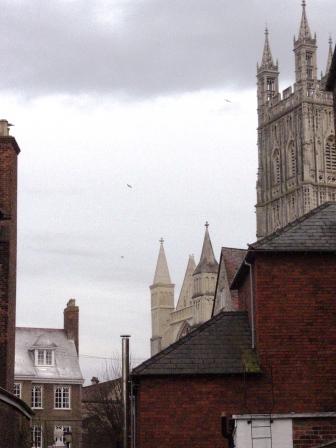 We couldn't resist having our photos taken amongst the
props for the 'Doctor Who 2008 Christmas Special'. The question is,
will the 'real' monsters be any more scary than us?
We couldn't resist having our photos taken amongst the
props for the 'Doctor Who 2008 Christmas Special'. The question is,
will the 'real' monsters be any more scary than us?
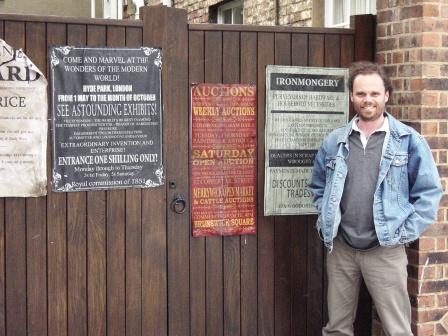 Dark Star author Andy Lloyd with Dr Who
memorabilia
in Gloucester
Dark Star author Andy Lloyd with Dr Who
memorabilia
in Gloucester
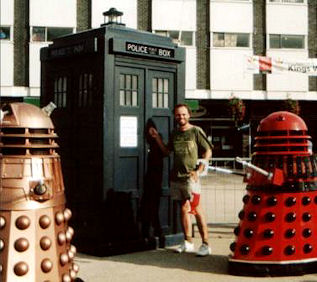
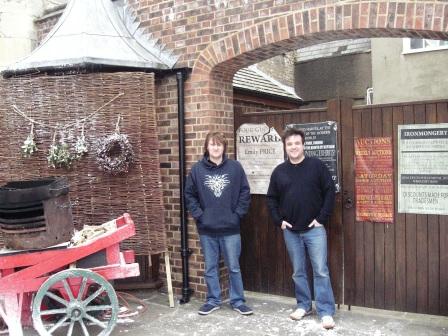 'Cosmic Conspiracies' webmasters Martin and Dave
'Cosmic Conspiracies' webmasters Martin and Dave
Written by
Andy
Lloyd, 21-28 April, 12 December 2008,
and 3-5 January 2010,
with thanks to Tarkin and John
author of 'The Dark Star'
(2005), 'Ezekiel One'
(2009), 'The Followers of
Horus' (2010) and 'Darker Stars' (2019)
Published by Timeless Voyager Press





